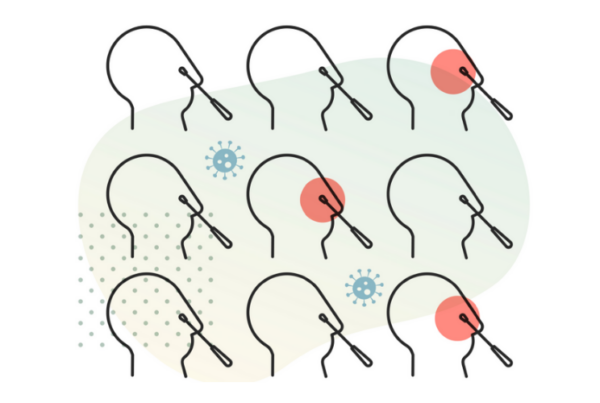
What is JobMaker?
JobMaker is a credit available to eligible businesses and non-profit entities that create new jobs (not if you are merely replacing someone who left). The hiring credit is available for jobs created from 7 October 2020 until 6 October 2021 and provides:
- $200 per week for new employees between 16 to 29 years of age; and
- $100 per week for new employees between 30 to 35 years of age.
Administered by the ATO, JobMaker is a credit that is paid quarterly in arrears from the start date of the employee for 12 months, assuming the business and employee remains eligible (see JobMaker Eligibility).
The credit is an incentive for the employer to support wage costs and is not passed onto the employee.
Unlike JobKeeper, JobMaker can apply to new businesses and the business does not need to satisfy a decline in turnover test to receive payments.
A series of people are excluded from the JobMaker scheme including employers receiving JobKeeper, employees receiving an apprentice wage subsidy, and close associates of the business including some relatives of the business owners (see Who is not eligible for JobMaker?).
To access JobMaker payments, you will need to:
- Determine if the business is eligible to receive JobMaker payments (see JobMaker Eligibility)
- Determine which, if any, employees are eligible (see JobMaker Eligibility) and whether the higher or lower rate applies to them
- Ensure the business passes the ‘additionality test’. That is, total headcount and payroll have increased, not just that you have employed new employees. You will need to pass this test in every quarter you make a claim (see JobMaker Eligibility and Calculating baseline headcount and payroll)
- Ensure eligible employees complete the JobMaker employee notice (see The JobMaker employee notification)
- Enrol for JobMaker with the ATO (see How to register for JobMaker)
- Establish the baseline payroll and headcount for your business (see Calculating baseline headcount and payroll)
- Calculate the increase in headcount and payroll for your JobMaker claim (see Calculating your JobMaker claim)
- Ensure the claim is lodged by the end of the claim period (see Key JobMaker dates)
JobMaker Eligibility
There are three eligibility tests for JobMaker:
| Employer eligibility | At the time of enrolment, the business must: Have an ABN Carry on a business in Australia, or is a non-profit that pursues its objectives mainly in Australia, or a DGR that meets certain conditionsBe registered for PAYG withholding At the time a JobMaker claim is submitted for a period, the business must: Be an eligible employerBe up to date with certain tax lodgements (tax returns, GST returns) Have at least one additional employee*Have increased headcount*Have increased payroll*Not be receiving other forms of assistance from the Commonwealth Government for the employee, for example JobKeeper or an apprenticeship subsidy*** And: Elect to participate in the JobMaker scheme**Report through single touch payroll (there are some limited exceptions)Submit a claim to the ATO for the JobMaker periodKeep adequate records (hours worked by the employee the employer is claiming for)Another employer is not claiming JobMaker for the same employee |
| Employee eligibility | The employee must: Have received the JobSeeker Payment, Youth Allowance (Other) or Parenting Payment for at least 28 consecutive days (or 2 fortnights) in the 84 days (or 6 fortnights) prior to starting employmentBe at least 16 years old and less than 36 years of age at the time their employment startedStarted work between 7 October 2020 and 6 October 2021 (inclusive)Worked or been paid for at least 20 hours per week on average+ for the full weeks employed for the period being claimedNot be an excluded employee*** |
| ‘Additionality’ test | To access the JobMaker payment, an employer must demonstrate: Total employee headcount on the last day of the reporting period increased by at least one additional employee compared to baseline headcount+.Total payroll for the reporting period increased compared to baseline payroll+. |
* See the ‘additionality’ tests. ** See How to register for JobMaker *** See Who is not eligible for JobMaker? See Calculating headcount and payroll
Who is not eligible for JobMaker?
Government entities or agencies, banks and other institutions subject to the bank levy, businesses in liquidation, and foreign Government entities (unless a resident entity), are unable to access JobMaker.
If the employer is claiming JobMaker, it cannot also receive any of the following payments for the employee:
- Supporting Apprentices and Trainees Wage subsidy;
- Australian Apprentice Wage subsidy;
- Boosting the Apprenticeship Commencements Wage subsidy; or
- Restart, Youth Bonus, Youth, Parents or Long-term Unemployed Wage subsidies.
Certain employees are also excluded. These include:
- Employees who commenced employment 12 months or more before the first day of the JobMaker period (even if the employer has claimed JobMaker for less than 12 months, for example where the employee was eligible for JobKeeper). The entitlement to JobMaker is for 12 months from the date the eligible employee commenced employment.
- Contractors, subcontractors or labour hire employees.
- Employees who were engaged by the business at any time in the 6 months before 6 October 2020, other than as an employee, to perform a substantially similar role or substantially similar functions or duties to those performed as an employee. For example, JobMaker cannot be claimed for a contractor who becomes an employee.
JobMaker also cannot be claimed for:
- Sole traders (as they cannot employ themselves);
- Partners of a partnership;
- Trustees and beneficiaries of trusts (that are not widely held unit trusts); or
- Directors or shareholders of companies (that are not widely held).
JobMaker also cannot be claimed for close associates of the business and its owners. A “close associate” is a relative of an individual, partner, trustee, beneficiary, director or shareholder. The rules also apply on a look-through basis. For example, this would mean that a child of a director of a trustee company of a trust is excluded. A relative is:
- The spouse of the person;
- A parent, grandparent, brother, sister, uncle, aunt, nephew, niece, lineal descendent or adopted child of that person, or of that person’s spouse;
- The spouse of the parent, grandparent, brother, sister, uncle, aunt, nephew, niece, lineal descendent or adopted child of that person, or of that person’s spouse.
How to register for JobMaker
Businesses will need to elect to participate in the JobMaker scheme with the ATO. This election can be made at any time before the end of the JobMaker claim period your business wants to claim payments for. For the first JobMaker period (7 October 2020 to 6 January 2021), the claim period ends on 30 April 2021, which means that if your business wants to claim JobMaker for this period it needs to register with the ATO by 30 April 2021.
Your business only needs to register once for JobMaker. This can be done through:
- ATO online services through myGov;
- The Business portal using myGovID; or
- Using your registered tax or BAS agent.
When you register, your business will need to provide:
- Headcount at 30 September 2020 (see Calculating baseline headcount and payroll below);
- Payroll for the 3 months up to and including 6 October 2020; and
- Contact details.
Each of your eligible employees must give you written notice in the approved form (the JobMaker employee notification) confirming that:
- The age condition was met;
- They met the social security payments condition; and
- They have not provided a notice to another entity of which they are currently an employee, unless that notice has ceased to have effect. A notice ceases to have effect as soon as the relevant employment arrangement ceases.
The JobMaker employee notification
You can give your employees the pro-forma ATO JobMaker employee notice or create your own as long as all of the relevant information is included. Once complete, the form is held on file (it does not need to be lodged with the ATO).
Each employee will need to be added to Single Touch Payroll three days prior to the end of the relevant JobMaker claim period.
Calculating baseline headcount and payroll
On registration, your business will need to establish your baseline for:
- Headcount; and
- Payroll.
The details you provide as part of the registration process can be amended until the first claim is submitted. However, once the first claim is submitted, it is unlikely the details can be changed so it will be important to ensure that the headcount and payroll figures are correct as these form the basis for calculating the JobMaker payments.
For each JobMaker period, you will need to establish that your headcount and payroll continues to demonstrate that at least one additional employee was employed (see Ongoing JobMaker reporting below).
How is baseline headcount calculated?
The baseline headcount figure is simply the number of employees employed by your business at 30 September 2020. Each employee is counted as one, regardless of whether they are full-time, part-time or casual. Contractors and sub-contractors are not counted. If someone is engaged on a fixed-term contract you will need to check whether they are classified as an employee or contractor.
If your business did not have any employees on 30 September 2020 or started business after 30 September 2020 then the baseline headcount is zero.
The baseline headcount figure will be adjusted in the second year of the JobMaker scheme to ensure new employees are not counted twice.
How is baseline payroll calculated?
Your business’s baseline payroll figure is the total payroll paid within the three months up to and including 6 October 2020 (i.e., a period of 92 days). This figure is also used for the purpose of determining the credit for the first JobMaker period, but adjustments will sometimes need to be made to this figure for future periods.
‘Payroll’ includes:
- Salary, wages, commission, bonus, allowances;
- PAYG withholding amounts; and
- Salary sacrificed super contributions and fringe benefits
The ATO suggests that the following payments do not count towards the baseline or total payroll expenses:
- Government Paid Parental Leave (GPPL);
- Workers’ compensation absence (not able to work);
- Reimbursements of expenses incurred by employees;
- Directors’ fees (that are not salary and wages);
- Lump sum payments (lump sum A, B, D and E);
- Exempt foreign income (exempt from pay as you go withholding);
- Eligible termination payments;
- Fringe benefits provided to an employee which are not part of an effective salary sacrifice arrangement; and
- Amounts contributed as super to meet employer super guarantee obligations.
Baseline payroll appears to focus on when payments are made, rather than the period that they relate to.
Your business’s payroll expenses must have increased in the JobMaker period compared to the baseline payroll amount to be able to access JobMaker for that period. If payroll does not increase, your business will not be eligible for a payment for that period.
The payroll increase amount also provides an upper limit on the JobMaker payments for that period. That is, your business will not be eligible for payments that exceed your increase in payroll.
If Business is a new business
If your business is a new business that started after 6 October 2020, the baseline payroll amount will be zero. If the business only started employing employees part way through the three months up to 6 October 2020, then the baseline payroll simply includes the payroll expenses up to that date.
| New employee example Mary runs a small bakery business with one full-time employee. Her employee is paid a salary of $30,000 a year. The baseline payroll expenses for the first JobMaker period is the sum of the payroll amounts for the three months (92 days) up to and including 6 October 2020. Mary’s baseline payroll amount is $7,500. The bakery has had a growth in sales which prompts Mary to hire an assistant manager on 7 October 2020. The manager is paid $80,000 per year. The bakery’s total payroll expenses for the JobMaker period will be $27,500 ($20,000 for the assistant manager and $7,500 for her other employee). As the total payroll expenses for the JobMaker period exceeds the baseline payroll amount by $20,000, she has a payroll increase. If Mary satisfies the other requirements, the bakery will be eligible for the JobMaker Hiring Credit payment for the period. ATO example: JobMaker Hiring Credit – Your payroll |
How is the ‘20 hours per week’ requirement calculated
An employee needs to have worked an average of at least 20 hours per week for the full weeks employed for the JobMaker period being claimed. To work out the number of hours that they must have worked or been paid for in the relevant period, start with the total days that the individual was employed by the entity in the JobMaker period. Then, divide this by 7 and round down to nearest whole number. This figure is then multiplied by 20.
Hours of paid work include paid overtime, paid leave and paid absences on public holidays. It does not include any unpaid leave. The number of hours actually worked include any hours worked, including unpaid overtime, paid leave and paid absences on public holidays and might be more appropriate if an employee is not paid on a particular rate (such as salaried employees).
| Hiring an eligible employee partway through a JobMaker period Marco is a 30-year-old labourer who was receiving the JobSeeker payment. On 28 November 2020, Marco started employment with a construction company. Marco worked for 25 hours per week for the rest of the JobMaker period. To satisfy the minimum hours requirement, Marco must work at least 100 hours in the period (being 40 days employed, divided by 7, rounded down and multiplied by 20). Marco will satisfy this requirement, as he has worked 125 hours in the remainder of the period. ATO example: JobMaker hiring credit – Your eligible employees |
Calculating your JobMaker claim
Assuming the business and your employees are eligible, and you have enrolled for JobMaker, the next step is to work calculate your JobMaker claim. The ATO will work out the actual amount owing to your business. You are responsible for reporting the headcount and payroll for a period.
Your business is only eligible for JobMaker payments if the headcount and payroll have increased against your baseline for the relevant period.
Calculating the JobMaker amount can be complex. Broadly, the hiring credit payment for a particular period is the lesser of:
- The headcount amount for the period; and
- The payroll amount for the period.
The headcount amount is based on mixture of factors including:
- Total increase in headcount;
- Number of days in the period;
- Number of days the additional employees were employed in the period; and
- Whether the employees are higher or lower rate.
The ATO will calculate the amount based on:
- STP information;
- Headcount; and
- Payroll information provided in the registration and claim form.
You can use the ATO’s JobMaker Hiring Credit payment estimator to estimate the payment you may receive for cashflow purposes.
Headcount increase
The headcount increase condition operates a bit differently depending on which JobMaker period you are dealing with. For the first four JobMaker periods, headcount at the end of the relevant period is measured against headcount at 30 September 2020. From the fifth JobMaker period (in 2022) onwards the baseline headcount figure will be adjusted.
Your total headcount for a particular JobMaker period only includes employees who are employed at the end of the period. Employees who worked during the JobMaker period but were not employed at the end of the last day of the period are not taken into account.
| Headcount increase number for first JobMaker period example ABC Pty Ltd (ABC) has been operating a local grocery since the 1990s. On 30 September 2020, ABC had 15 employees. On 7 October 2020, in anticipation of an increase in business over the holiday period, ABC takes on an additional 2 employees. ABC’s new employees (and their existing employees) are still employed by ABC at the end of the first JobMaker period (6 January 2021). ABC’s headcount increase number for the first JobMaker period is calculated as follows: 17 (employees employed at the end of period) − 15 (baseline headcount for period) = 2 ATO example: JobMaker Hiring Credit – Conditions for making a claim |
.
| Termination of employment example On 31 January 2021, ABC’s temporary employees stop working for ABC, as does one of ABC’s other employees. ABC does not have any other staff movements for the second JobMaker period (7 January 2021 – 6 April 2021). ABC does not have a headcount increase in the second JobMaker period because the number of employees employed at the end of the period (14) is less than its baseline headcount (15 employees on 30 September 2020). As ABC does not have a headcount increase in the second JobMaker period, it is not entitled to a JobMaker Hiring Credit payment for this period. ATO example: JobMaker Hiring Credit – Conditions for making a claim |
Payroll increase
The payroll increase test involves comparing the total payroll amount for the JobMaker period with your baseline payroll amount.
The payroll figure reported as part of the registration process is the total payroll paid within the three months up to and including 6 October 2020 (i.e., a period of 92 days). However, this won’t necessarily be the baseline payroll figure for each JobMaker period. This is because the figure needs to be adjusted if the relevant JobMaker period does not have 92 days.
For example, the first JobMaker period ending on 6 January 2021 has 92 days so the amount reported to the ATO as part of the registration process should be used as the baseline payroll amount. However, the second JobMaker period runs from 7 January 2021 to 6 April 2021 and has 90 days. As a result, the baseline payroll figure needs to be adjusted so that amounts paid / applied on the 7th and 8th of July 2020 are not included. Rather, the baseline payroll amount for this JobMaker period covers the 90 day period from 9 July 2020 to 6 October 2020 (inclusive) – see Key JobMaker dates.
Key JobMaker dates
| JobMaker period | JobMaker period dates | Days in JobMaker period | Claim period |
| 1 | 7 October 2020 – 6 January 2021 | 92 | 1 February 2021 – 30 April 2021 |
| 2 | 7 January 2021 – 6 April 2021 | 90 | 1 May 2021 – 31 July 2021 |
| 3 | 7 April 2021 – 6 July 2021 | 91 | 1 August 2021 – 31 October 2021 |
| 4 | 7 July 2021 – 6 October 2021 | 92 | 1 November 2021 – 31 January 2022 |
| 5 | 7 October 2021 – 6 January 2022 | 92 | 1 February 2022 – 30 April 2022 |
| 6 | 7 January 2022 – 6 April 2022 | 90 | 1 May 2022 – 31 July 2022 |
| 7 | 7 April 2022 – 6 July 2022 | 91 | 1 August 2022 – 31 October 2022 |
| 8 | 7 July 2022 – 6 October 2022 | 92 | 1 November 2022 – 31 January 2023 |
We are here to assist
If you need help with getting set up on Single Touch Payroll for eligibility purposes, please give us a call on (03) 9810 3666.



